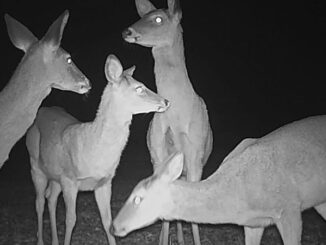
With deer season in the rear-view mirror, take a look
Hopefully, this past deer season resulted in trophies for many hunters and plenty of venison for many more. Just as they do every season, a few mysterious bucks evade the sights of the serious hunters and survive. For some hunters, thinking about outsmarting a trophy buck ends when the season does, depending on where you hunt in Mississippi, but post-season scouting is a tremendous way to understand where big, mature bucks reside and why they show up in these areas.
Mature bucks live into maturity because of their keen senses. Without their premier sense of smell, deer would never reach maturity. Post-season scouting allows hunters to detect the patterns of big bucks on their property and to prepare for the following season without crippling chances during the season.
Too often, hunters scout heavily during the preseason and the hunting season itself. Mature bucks will quickly change their travel patterns when too much unnatural disturbance occurs within their core areas. Post-season scouting allows hunters to unravel the story and prepare for the next season without the worry of moving a buck out of any area.
Feb. 1 is the prime day to start scouting for next year across most of the state. While specific bucks frequenting an area will probably not be around next fall, hunters can locate the key areas that attracted the mature bucks. Finding areas with heavy doe use will coincide with buck sign. For simplicity, does need adequate food and water adjacent to cover in areas with little human disturbance.
Start investigating major food sources, including heavily-used food plots, mast-production areas, agriculture fields, and other major food sources. Observe the level/direction of tracks and major/minor travel lanes entering and exiting feeding areas. Closely observe the minor travel routes paralleling the major travel routes. These minor travel routes are generally used by bucks over does. Follow these travel routes to bedding zones, noting accumulations of rubs and scrapes within these areas and identifying possible staging areas and landscape funnels between each of these destinations.
Note the travel trails used by mature bucks with large rubs and thick tracks. These rub lines typically have a pattern to them and will be used by other bucks the following year.
Bucks rub trees to establish dominance within an area and to mark their bedding area. Bedding areas utilized by bucks will be peppered with rubs on almost every available sapling/tree within thick cover. Knowing bucks’ bedding areas is important.
While food plots and feeding areas are often targeted for stand locations, the staging areas and funnels are more productive for daylight encounters, but they are a little tricky getting to without causing too much commotion.
Mature bucks will not arrive at feeding areas until after nightfall as hunting pressure increases. Identify the staging areas and funnels, closely-observing buck sign and sites for potential stand locations. Look for trees overlooking natural shooting lanes for stands where you can have quick and easy access during the season. Don’t choose stand locations immediately adjacent to bedding areas, which are sacred — especially for mature bucks. Early in the season, while pressure is low, deer will bed on the very edge of the cover. Make sure stand locations are far enough away from the bedding areas to prevent spooking these deer while entering and exiting the stand.
As good ambush locations are found, erect stands and clear/trim shooting lanes and hunter access routes to reduce disturbance during the deer season when disturbance needs to be low as possible. Take note of how to approach stands with the wind coming from different directions.

